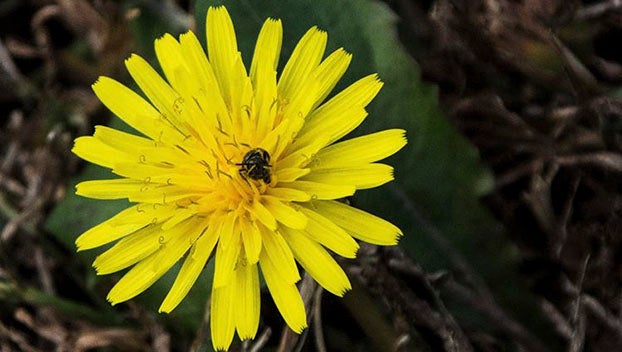Mother Nature’s Garden: What makes a plant native?
Published 8:51 am Sunday, February 12, 2023

- Dandelions originated in Eurasia and have spread throughout much of the world.
|
Getting your Trinity Audio player ready...
|
“Ditch lilies are native. I know they are; I saw it on the internet!”
“Dandelions must be native. They’ve been here forever!”
Explaining what makes a plant native can get complicated, and people are often seriously invested in their beliefs about specific plants. It can be hard to sway their emotions with facts, and it is complicated.
A plant can be native to the United States, but not native to Virginia. A plant can be native to Virginia, but not native to every county in Virginia. All plants are native to planet earth, but can be nonnative to any particular area on the planet. The term native plant is clearly part of botanical, horticultural, and popular vocabularies, but there is no consensus as to its definition.
The American Gardener published a definition that makes sense to me: “Native plants should be defined as those that have evolved and adapted to a specific location and have remained genetically unaltered by humans.” (The American Gardener Nov-Dec 1998). According to another definition, native plants are local. They have been growing in a particular habitat and region, typically for thousands of years. Native plants are those that were here in North America before the arrival of European settlers who brought many nonnatives for use as food, medicine, much loved ornamentals. For example, burdock, common mullein, yellow toadflax, and sweet fennel.
Some scientists are now saying, however, that climate change means these definitions need revision because they are static. How do we decide when a plant is native as the world warms and plants expand their range northward?
Biologists in Massachusetts are tussling with this question now. In the 1800s, Emily Dickinson’s brother planted three umbrella magnolias (Magnolia tripetala) at his home in Massachusetts, hundreds of miles north of the tree’s native range from northern Georgia to southern Pennsylvania where it’s uncommon. These horticultural specimens survived, but didn’t naturalize into nearby woods. At least not until recently. Biologists have found large populations of umbrella magnolias along roads near the Dickinson home, and tests indicate they are 20 to 30 years old, so they didn’t “go native” until the local climate began to warm. Biologists are now discussing whether these trees should be considered native and on the cutting edge of the northern movement of this plant species or whether they are undesirables that should be removed because they may impact other species that definitely are native.
Now back to the ditch lily and the dandelion. It’s true that both were brought here by early European settlers. In spite of what some websites claim, the daylily originated in Asia and isn’t native.
The dandelion may be more complicated. It is originally from Eurasia and is now found virtually all over the world. Humans have been using dandelions for food and medicine for much of recorded history. Most information sources indicate that dandelions are nonnative. The complicating factor is that several Native American groups say that they were using dandelions hundreds of years before the arrival of Europeans. Some scientists agree (See Cardina, John. Lives of Weeds. Ithaca: Cornell University Press, 2020 and Richards, A.J. “The Origin of Taraxacum Agamospecies.” Botanical Journal of the Linnean Society, 66, no. 3, pp. 189 – 211). It’s far more difficult to prove the absence of a plant than to prove its presence, especially hundreds of years ago. Recently some scientists noted that dandelion seeds could have traveled on the wind from Asia. The distance isn’t prohibitive. The USDA website, for various other reasons, lists the dandelion as both introduced and native. The question of the nativity of the dandelion is probably evolving, and as it becomes clearer, the definition of native plants is likely to become more flexible too.
In the meantime, take a walk and see how many plants you can identify, including skunk cabbage. Don’t worry too much about definitions and technicalities. The visual and aromatic joys plants bring are the soul of your encounter with Mother Nature.
Dr. Cynthia Wood is a master gardener who writes two columns for The Herald. Her email address is cynthia.crewe23930@gmail.com.




